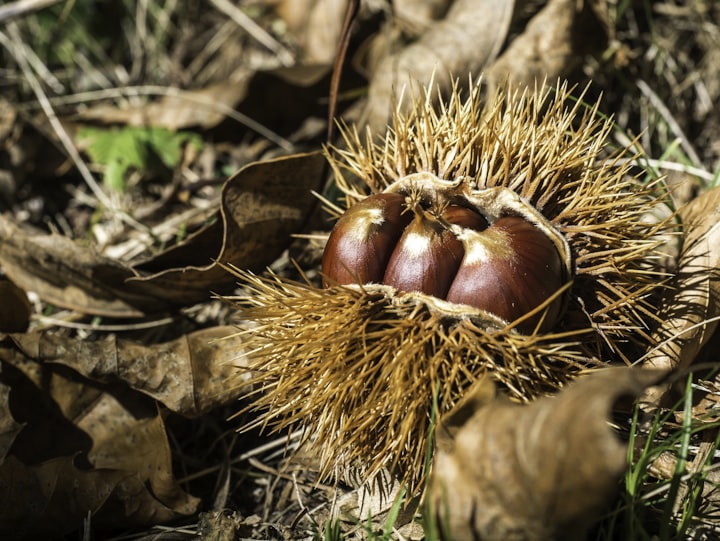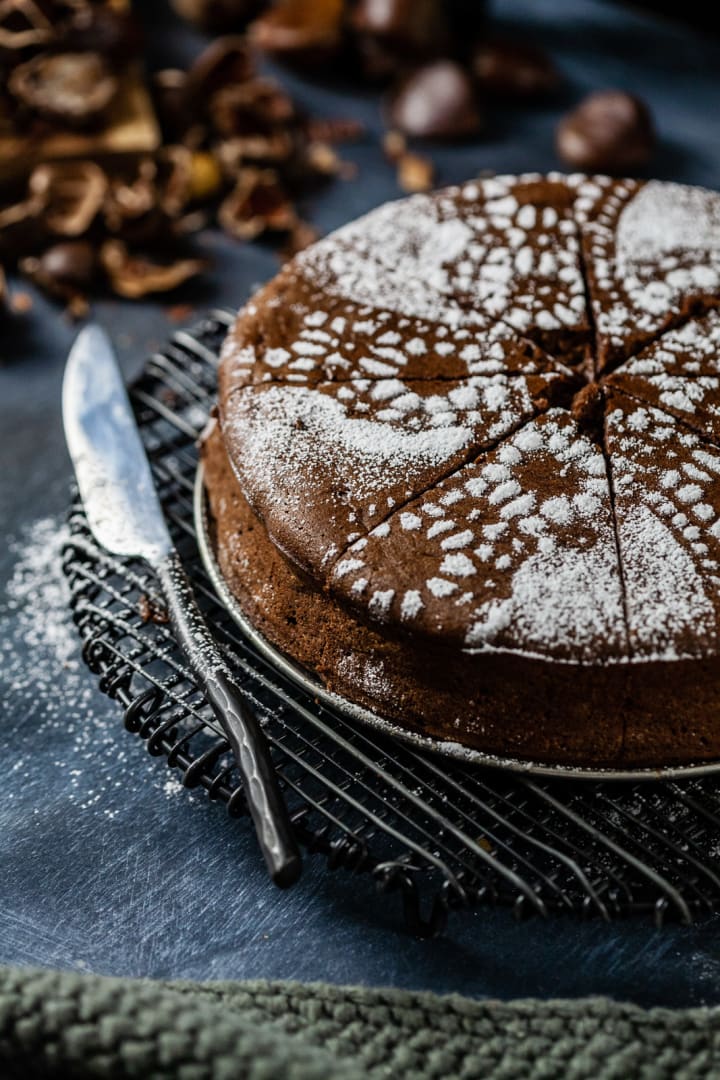Best NZ (or AUS) Dessert
Provenance under debate but delicious regardless.

Back in 2015 I travelled New Zealand for eight months. I spent most of the trip WWOOFing (Willing Workers on Organic Farms) around the North Island. Of all the farms I visited, my favourite had the perfect view of Mt Taranaki and was primarily off the grid. The family was incredibly welcoming. I spent my morning helping feed the animals (mostly guinea pigs being raised as pets but also chickens and ducks), checking cows and sheep, and weeding the garden that was designed using principles of permaculture.
It’s a beautiful country, with fascinating species (many of which are birds such as the Kiwi and Kakapo that are threatened by invasive species including cats, rats and goats). New Zealand will always remain close to my heart. I’m working towards becoming an ecologist in Canada but maybe I'll travel back there to complete some species at risk work in the future.
I also enjoyed the delicious food made from mostly farm fresh ingredients. I like to think when I have a farm of my own, I will be able to host my own WWOOFing travelers. Hopefully my cooking tastes just as good—though I am not as skilled at making desserts. Below are three of the most delicious dessert recipes I had the pleasure of eating while in New Zealand: Chestnut Chocolate Cake, Lamingtons, and Pavlova.
Chestnut Chocolate Cake

I helped pick chestnuts from a large tree which requires some finesse. The chestnuts are contained in a spiky ball of flesh that starts out green and becomes brown as it ripens, splitting open to reveal the nuts inside (as seen in the cover photo). Even wearing rubber boots, the spikes felt sharp! My hostess and I spent a morning collecting as many as we could.
Once the chestnuts were collected, band aids applied to our fingers, they had to be peeled. Then they can be ground into flour, roasted, or cooked and mashed like the following recipe instructs. It is described as a “really wonderful soft and gooey chocolate cake” and is a “doddle to make”. I do agree that it remains the most wonderful chocolate cake I have eaten to date but collecting those chestnuts is no easy feat, even if you have a tree in your back yard! This recipe is from Hugh Fearnley-Whittingstall’s River Cottage.
Serves 8-10 (but… probably less).
250 g dark chocolate
250 g unsalted butter
250 g peeled cooked chestnuts (or tinned)
250 ml milk
4 eggs
125 caster sugar
“Melt the dark chocolate and unsalted butter together in a pan over a very gentle heat. In another pan, heat the peeled chestnuts with the milk until just boiling, then thoroughly mash with a potato masher (or process to a rough puree in a blender).
“Separate 4 eggs, put the yolks in a bowl and mix with caster sugar. Stir in the chocolate mixture and the chestnut puree until you have a smooth, blended batter. Whisk the egg whites until stiff and fold them carefully into the batter. Transfer the mixture to a greased, lined, 25 cm cake tin (the springform type is good) and bake at 170 degrees Celsius (338 degrees Farenheit)/Gas Mark 3 for 25-30 minutes, until it is just set but still has a slight wobble.
“If you want to serve the cake warm, leave to cool a little, then release the tin and slice carefully. It will be very soft and moussey. Or leave to go cold, then it will have set firm. I like to serve it with a trickle of double cream, especially when warm, but it is also delicious unadulterated.”
Lamington Cake

My other two favourite New Zealand desserts have unproven provenance. Any Australian you meet is likely to insist Lamingtons and Pavlova are Australian. Every Kiwi (that’s what New Zealanders are fondly referred to as) will disagree. I took my time enjoying each dessert in both countries as I had spent a semester abroad in Sydney, Australia a couple years prior to my extended New Zealand trip.
In its most basic form, a Lamington is a small square cake with a thin coating of chocolate that has been dusted with coconut shavings. If you go to the right place, the cake is incredibly light and fluffy. The chocolate coating a perfect thickness. Melt in your mouth deliciousness. This recipe has been adapted from Where is my Spoon:
For the cake:
2 cups all-purpose flower
2 tsp baking powder
Pinch of salt
½ cup butter, soft
¾ cup granulated sugar
2 eggs
1 tsp vanilla extract
½ cup milk
For the chocolate icing:
3 ¼ cup icing sugar
2/3 cup unsweetened cocoa powder
1/3 cup unsalted butter
1 cup milk
2 cups desiccate coconut, unsweetened
Bake the cake a day in advance. It must be refrigerated for a night before coated in icing and coconut.
Preheat the oven to 350 degrees Fahrenheit. Grease a square 8 inch baking dish.
Sift the flour, baking powder, and salt together and set aside.
In another bowl beat the butter until it is creamy, add in the sugar and beat until it is fluffy. Add one egg, beat until it is well incorporated and then add the second egg and vanilla extract. Beat until it is also well incorporated into the mixture.
With the mixer on low, alternate between adding flour and milk ensuring you add flour first and last. Don’t overbeat, but ensure the mixture is smooth.
Place the batter in the baking dish and bake for 25-30 minutes or until a wooden toothpick in the middle comes out clean. After the cake has cooled for ten minutes, transfer it to a wire wrack to continue cooling. Once it is completely cool the cake can be wrapped in plastic to refrigerate overnight.
The next day, cut your cake into even 2 inch squares. Place on a wire wrack with a baking tray underneath to catch the chocolate and coconut drippings. Then, start making the chocolate icing. Sift the icing sugar and cocoa powder together and set aside. Melt the butter in a pan large enough to hold the cocoa powder and icing sugar.
When the butter is melted, add the milk, mix, and start adding the dry mixture while whisking constantly. Whisk well and continue adding the dry mixture until it is lump free.
When icing the lamingtons ensure that only a 1/3 of the chocolate mixture is in the pan. The rest can be put in a bowl and set aside. Place a 1/3 of the coconut onto a plate.
Dip the cake squares into the chocolate and then into the coconut one at a time. Work carefully but quickly. Use two forks to turn the lamingtons until they are coated in chocolate, let the excess chocolate drip off, then roll in the coconut. Transfer to the wire wrack. Repeat until all the squares are coated, refilling the pan and coconut plate as necessary. The coconut plate may become lumpy with chocolate and can be refreshed as needed.
The lamingtons can be refrigerated until set, but enjoy eating them at room temperature.
Pavlova

Pavlova is egg whites that have been whipped and baked at a low temperature to make a cake that is marshmellowy on the inside but crunchy on the outside. It is typically topped with fruit (kiwi fruit for example) and whipped cream for a delicious combination of textures. I was fortunate enough to be able to pick fresh figs and peaches from the trees of New Zealand, as long as I could beat the ravenous possums. This recipe has been adapted from Sally’s Baking Addiction.
4 egg whites – It is critical that there are only egg whites and no yolk.
1 cup sugar
1 tsp pure vanilla extract
½ tsp cream of tartar or vinegar
1 tsp cornstarch
Preheat the oven to 350 degrees Fahrenheit.
With a mixer (I’d recommend an electric one) beat the egg whites until soft peaks form. Add the sugar slowly, beating between additions. Then continue beating until stiff glossy peaks form. The peaks should be stiff enough that they do not move when the whisk is held upright. Add the vanilla and beat again until it is still very stiff. Using a rubber spatula, fold in the cream of tartar (or vinegar) and cornstarch.
Spread the mixture onto a baking sheet that has been covered with parchment paper. Make an 8 inch circle with tall edges and a dip in the center.
Place the pavlova in the oven, immediately reducing the heat to 200 degrees Fahrenheit once the door is closed. Bake about 90 minutes until the pavlova is firm and dry. Avoid opening the oven as much as possible, otherwise the pavlova will not bake properly.
Turn the oven off, letting the pavlova cool inside of it. Once cool, add your toppings and serve or store at room temperature in an air-tight container for up to two days.
______________________________________________
If you enjoyed this or learned something new, please support my work with a heart and click the owl to read more! Let me know what you want to learn about next on FB, Twitter, or Insta @akelseyreich.
Everything is connected. Written by Kelsey Reich on July 2/2021 in Ontario, Canada.
About the Creator
Kelsey Reich
🏳️🌈 Life-long learner, artist, creative writer, and future ecologist currently living in Ontario.
Find me on Facebook, Twitter, Instagram, and buy me a coffee @akelseyreich!
Your support is appreciated!
Want to join Vocal+? Click here!






Comments
There are no comments for this story
Be the first to respond and start the conversation.